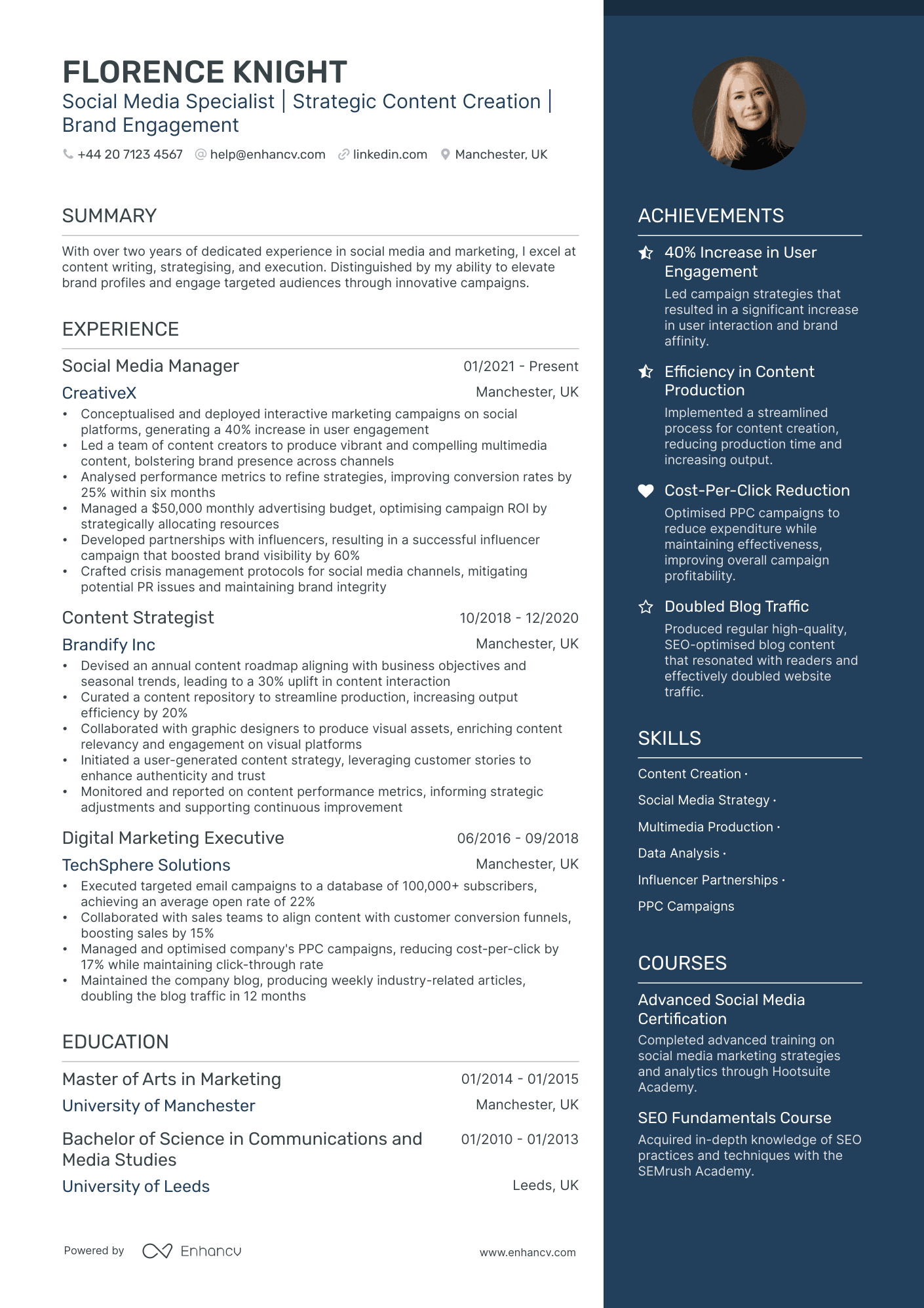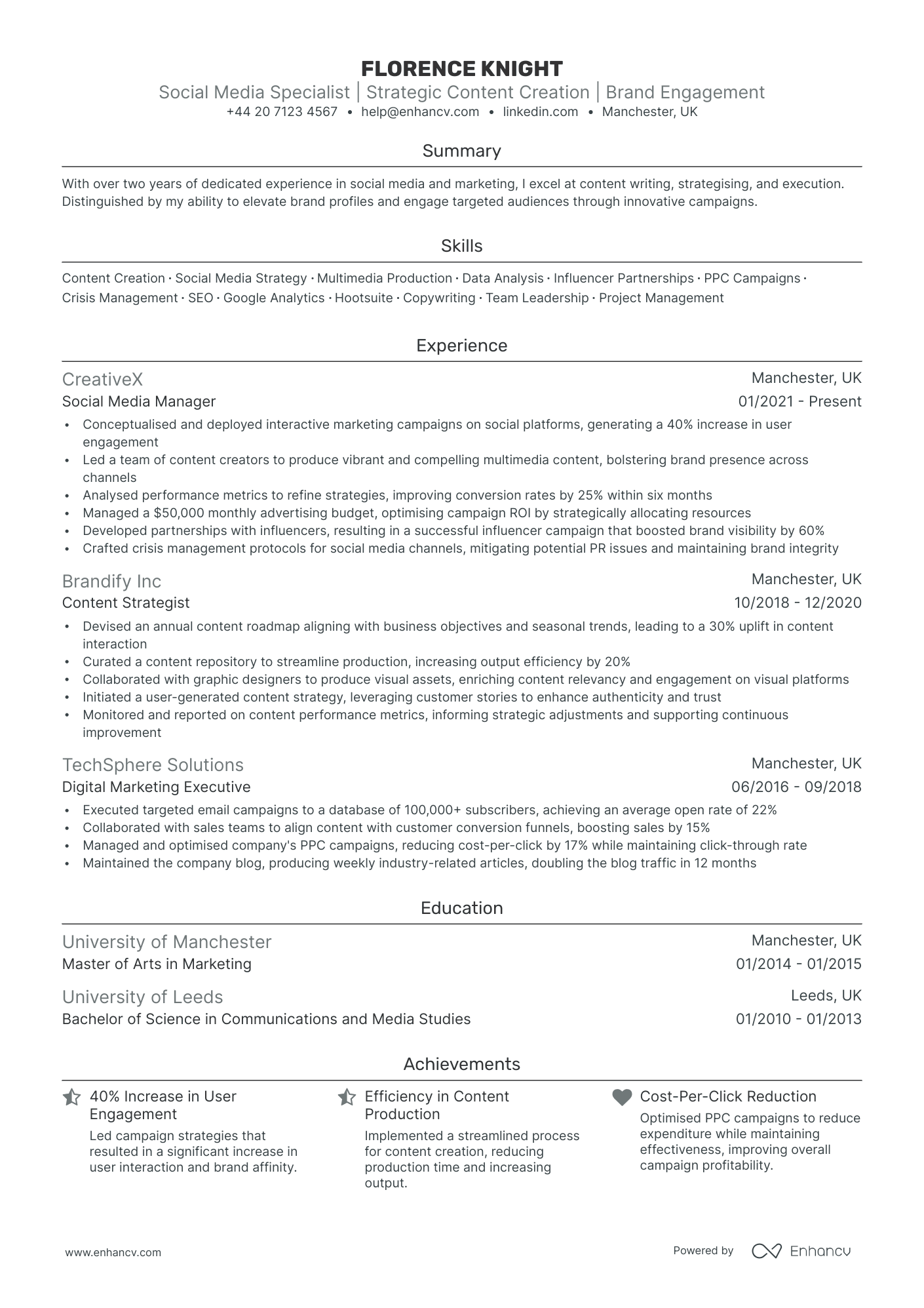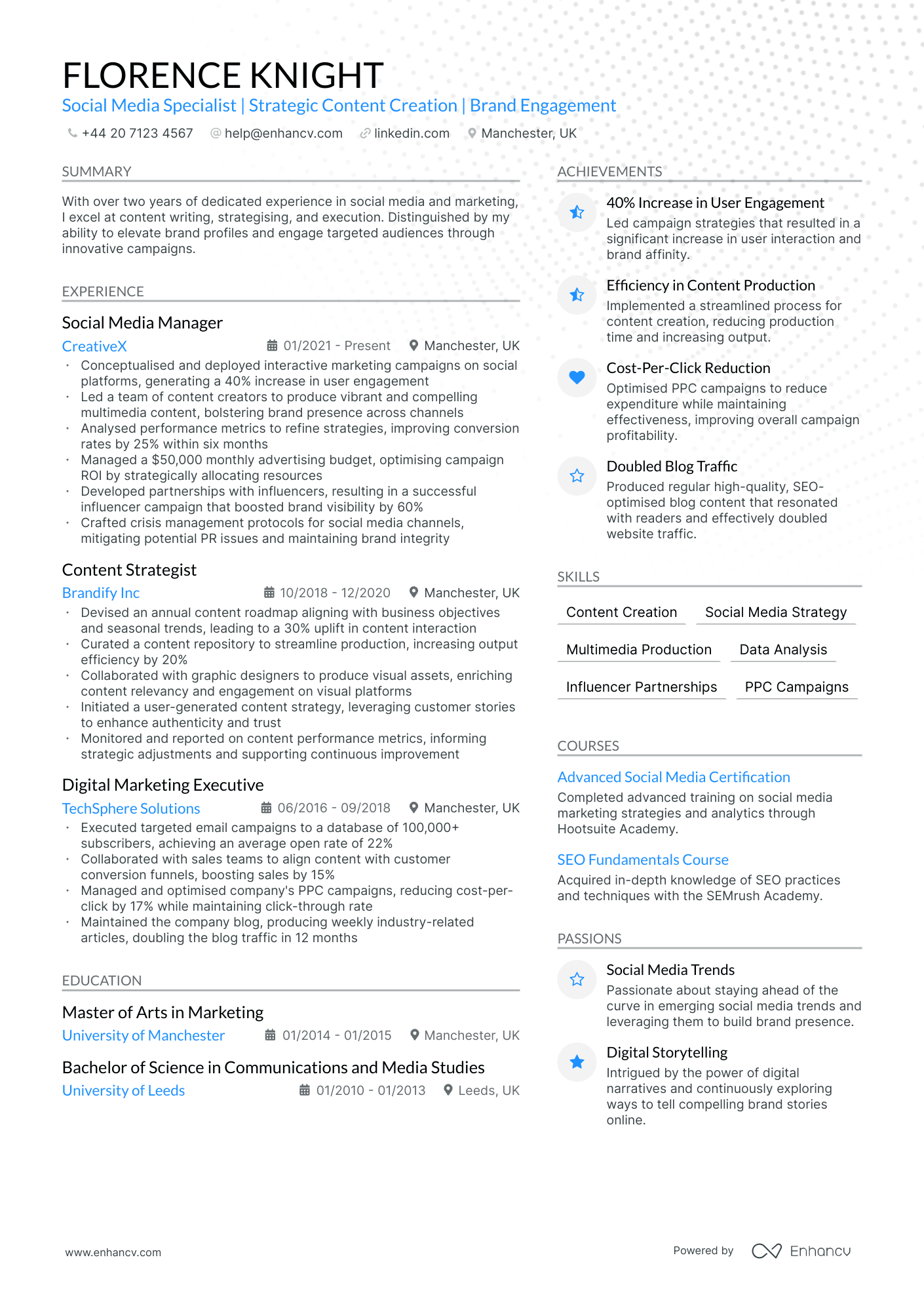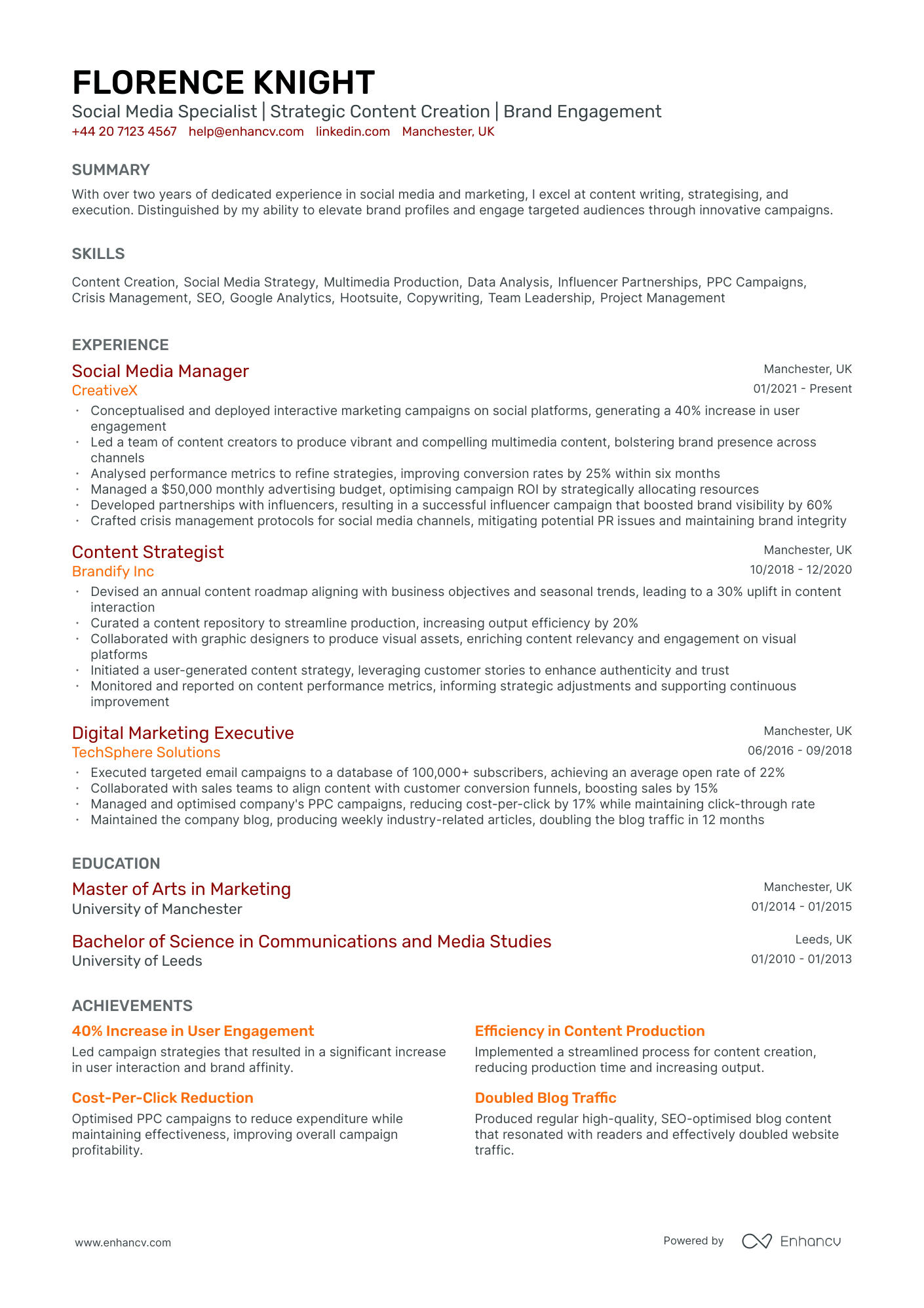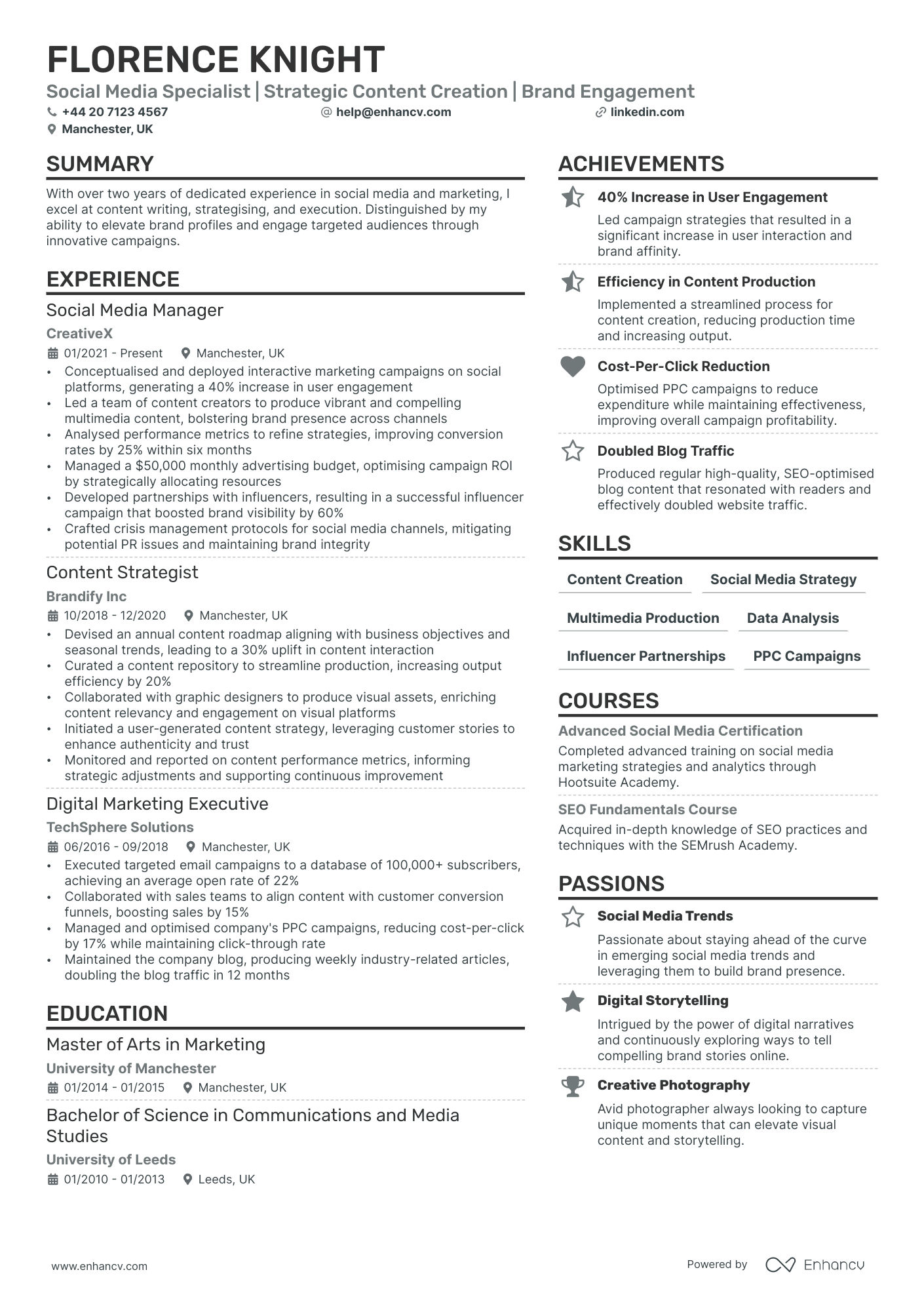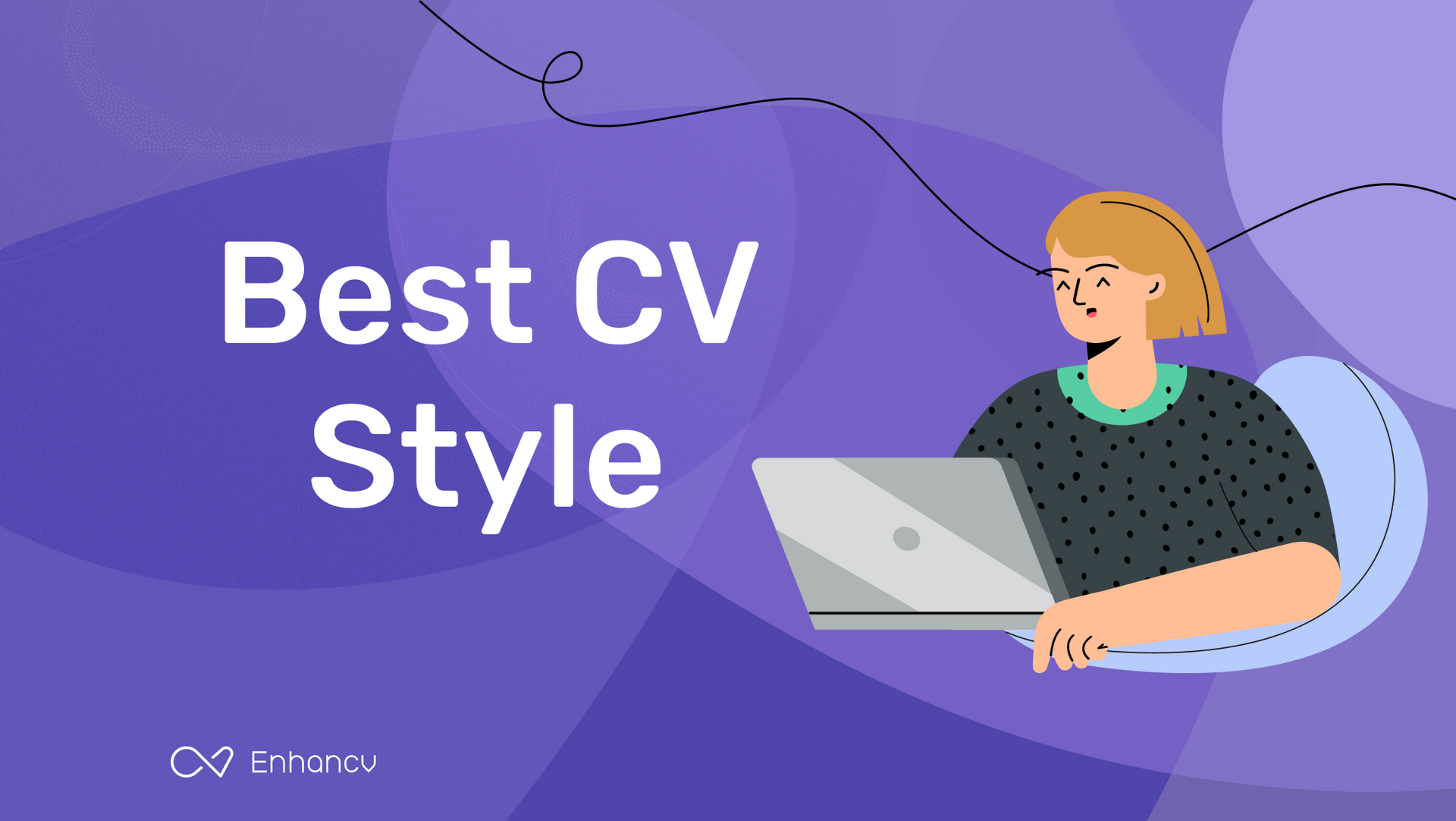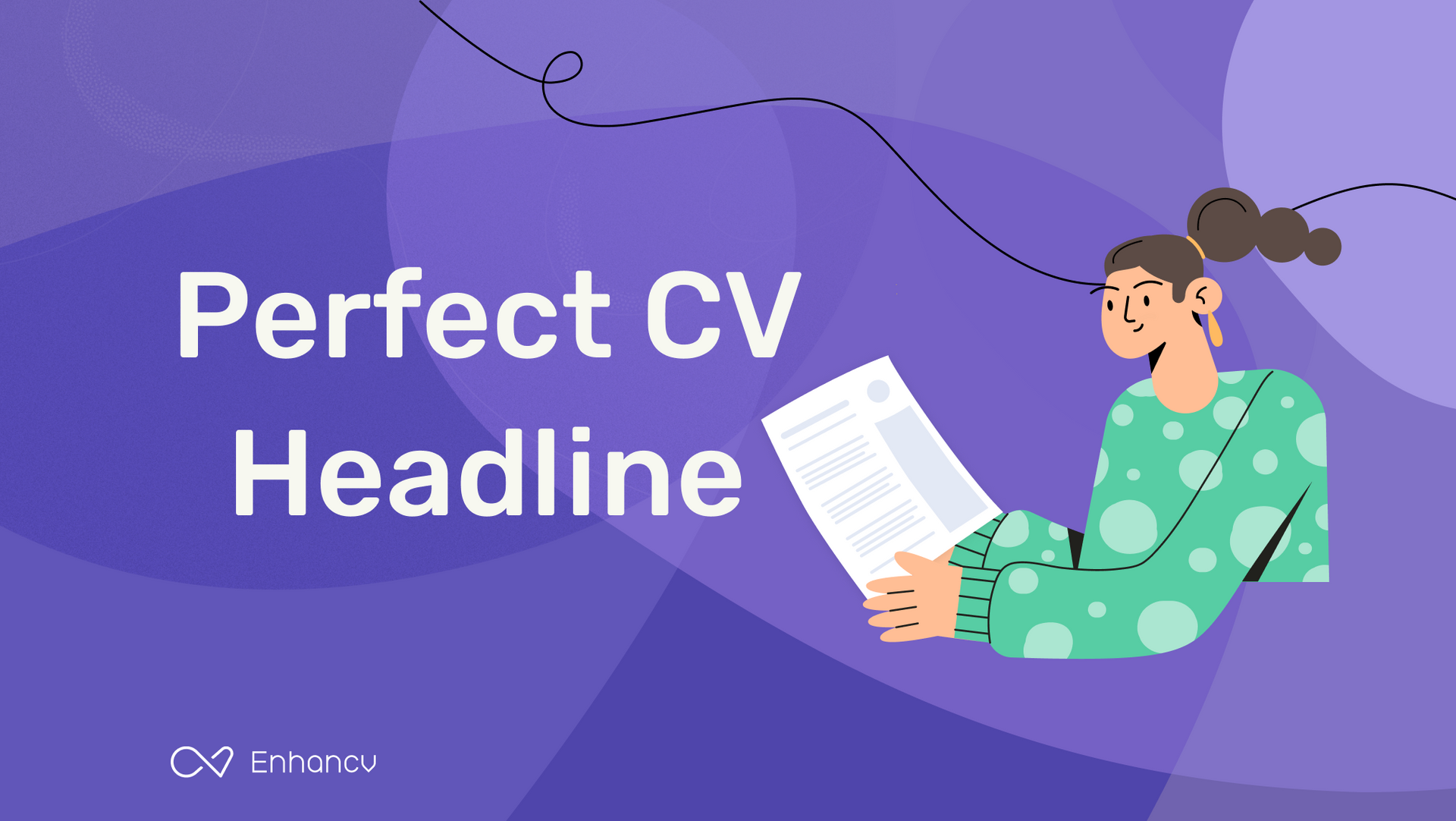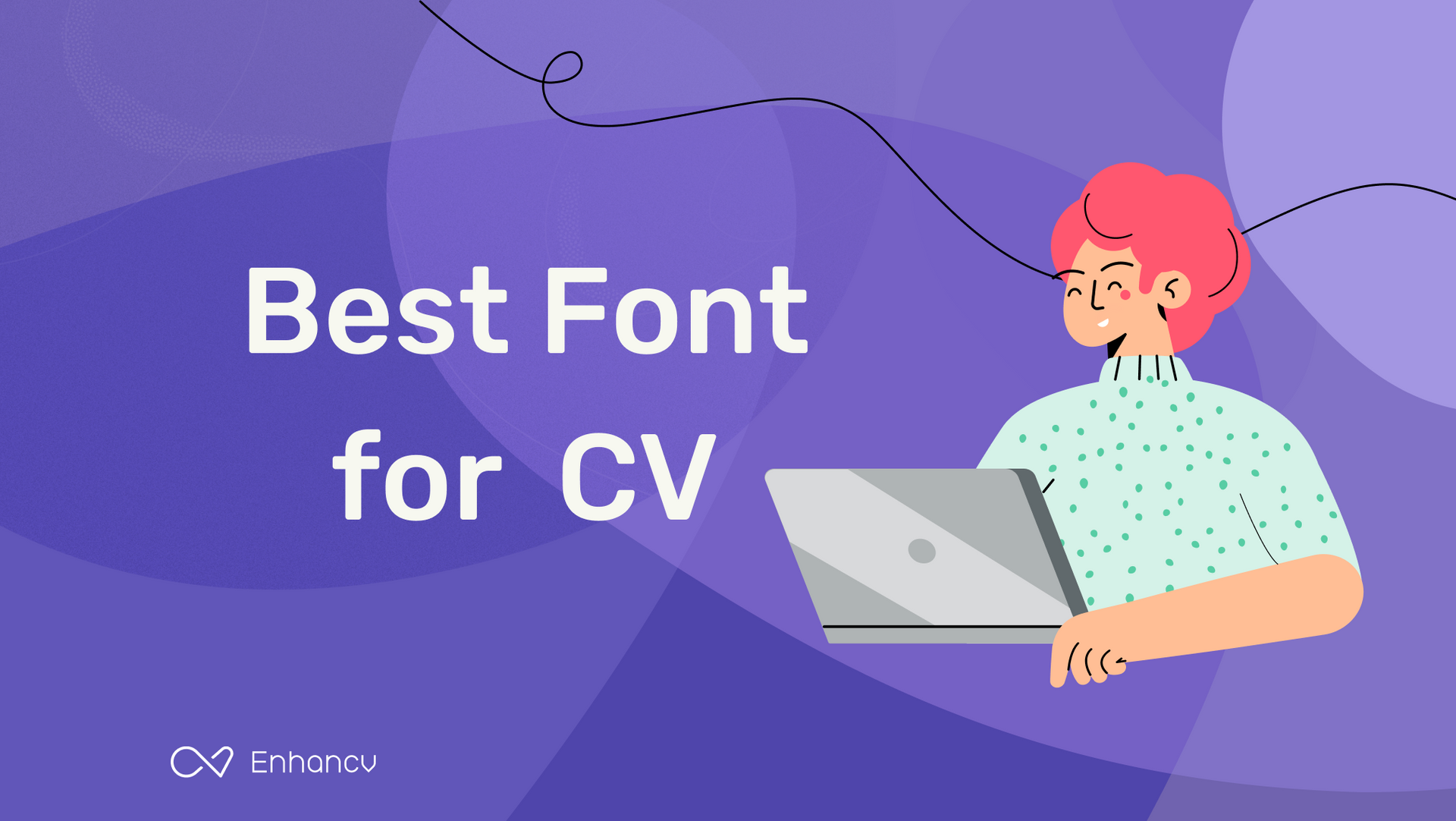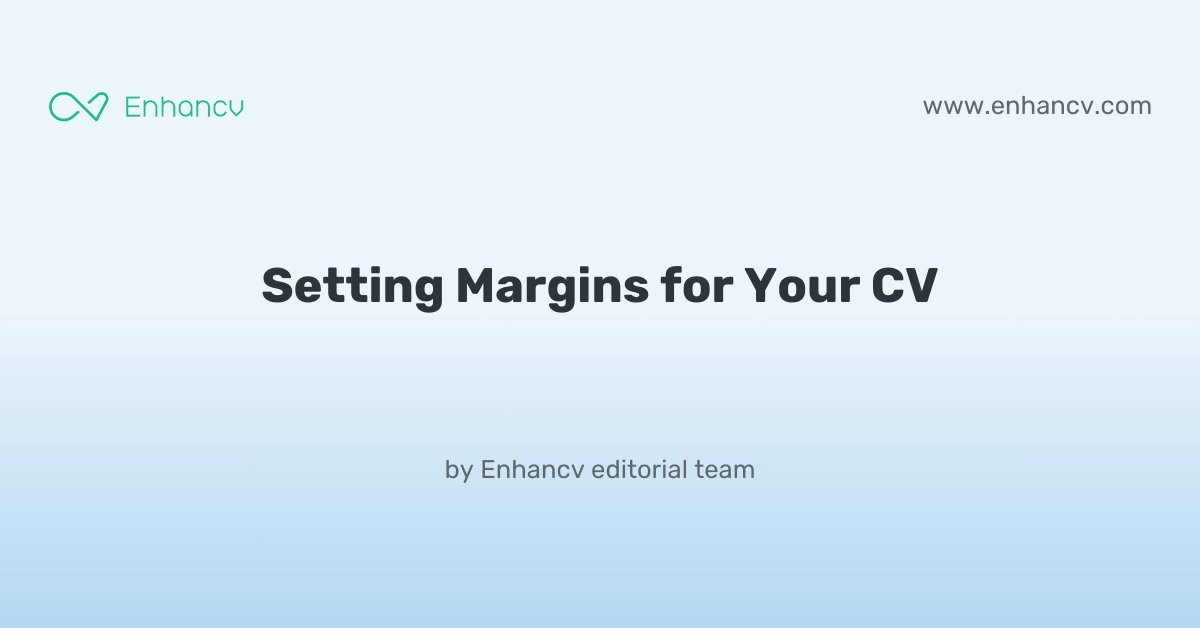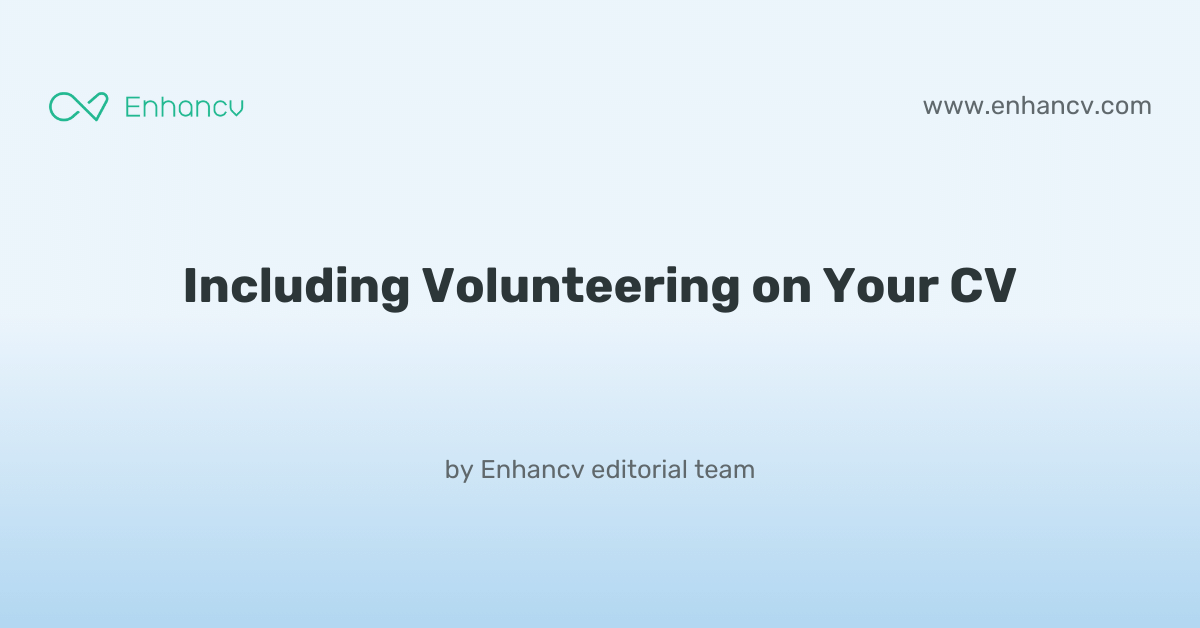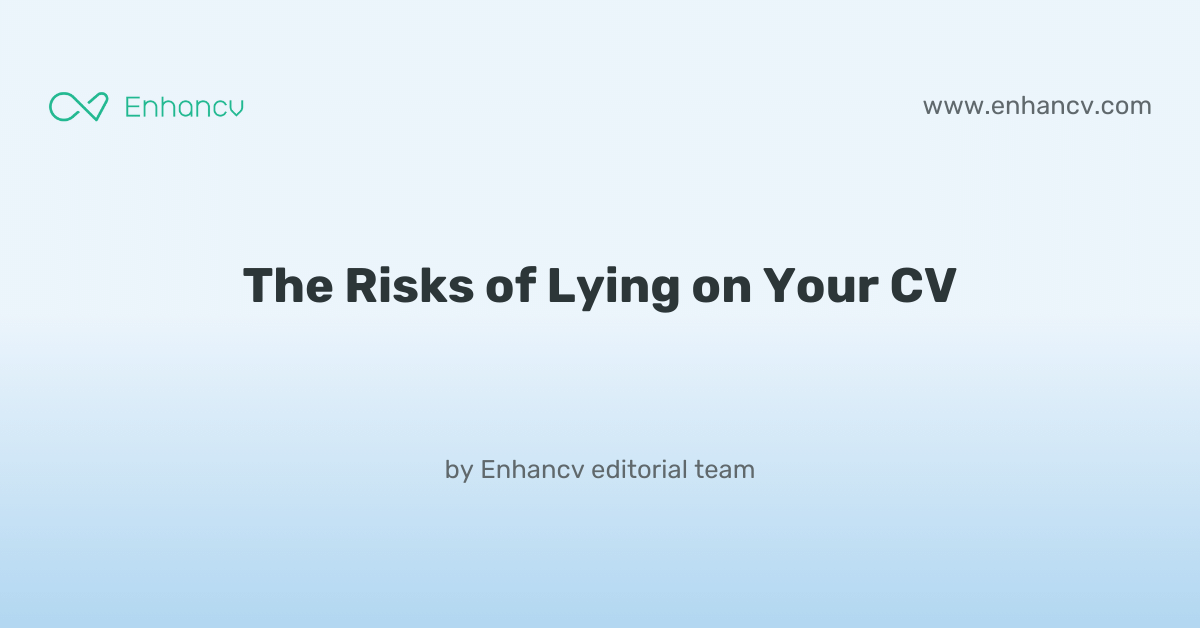One significant CV challenge faced by social media platforms is effectively filtering and moderating user-generated content in real-time. Our comprehensive guide offers strategies and tools to enhance your platform's content vetting processes, ensuring a safer online community.
- Applying the simplest CV design, so that recruiters can easily understand your expertise, skills, and professional background;
- Ensuring you stand out with your header, summary or objective statement, and a designated skills section;
- Creating your CV experience section - no matter how much expertise you have;
- Using real life professional CV examples to enhance the structure and outline of your profile.
If you still have no muse to write your professional CV, find some more industry-leading examples.
How to ensure your profile stands out with your social media CV format
It's sort of a Catch 22. You want your social media CV to stand out amongst a pile of candidate profiles, yet you don't want it to be too over the top that it's unreadable. Where is the perfect balance between your CV format simple, while using it to shift the focus to what matters most. That is - your expertise. When creating your social media CV:- list your experience in the reverse chronological order - starting with your latest roles;
- include a header with your professional contact information and - optionally - your photograph;
- organise vital and relevant CV sections - e.g. your experience, skills, summary/ objective, education - closer to the top;
- use no more than two pages to illustrate your professional expertise;
- format your information using plenty of white space and standard (2.54 cm) margins, with colours to accent key information.
Once you've completed your information, export your social media CV in PDF, as this format is more likely to stay intact when read by the Applicant Tracker System or the ATS. A few words of advice about the ATS - or the software used to assess your profile:
- Generic fonts, e.g. Arial and Times New Roman, are ATS-compliant, yet many candidates stick with these safe choices. Ensure your CV stands out by using a more modern, and simple, fonts like Lato, Exo 2, Volkhov;
- All serif and sans-serif fonts are ATS-friendly. Avoid the likes of fancy decorative or script typography, as this may render your information to be illegible;
- Both single- and double-column formatted CVs could be assessed by the ATS;
- Integrating simple infographics, icons, and charts across your CV won't hurt your chances during the ATS assessment.
PRO TIP
For certain fields, consider including infographics or visual elements to represent skills or achievements, but ensure they are simple, professional, and enhance rather than clutter the information.
The top sections on a social media CV
- Profile Summary showcases your social media expertise.
- Social Media Platforms proficiency highlights your practical skills.
- Content Creation & Strategy experience displays your creative ability.
- Engagement & Analytics Insights show your data-driven decision skills.
- Campaign Management & Growth achievements illustrate your impact on business.
What recruiters value on your CV:
- Showcase your hands-on experience with different social media platforms, ensuring to highlight proficiency with tools relevant to the role, such as content scheduling software and analytics platforms.
- Include metrics to quantify your successes, such as growth in follower count, increased engagement rates, or boosted conversion statistics from your past social media campaigns.
- Emphasise your ability to create compelling content by mentioning your experience with graphic design tools, video editing and content management systems, as well as your knowledge of current social media trends and algorithms.
- Demonstrate your communication skills with a brief on your experience in community management, customer service through social channels, or influencer partnership initiatives.
- Highlight any previous collaborations with other departments to align social media strategies with broader marketing goals, showing your understanding of integrated marketing communications.
Recommended reads:
How to present your contact details and job keywords in your social media CV header
Located at the top of your social media CV, the header presents recruiters with your key personal information, headline, and professional photo. When creating your CV header, include your:
- Contact details - avoid listing your work email or telephone number and, also, email addresses that sound unprofessional (e.g. koolKittyCat$3@gmail.com is definitely a big no);
- Headline - it should be relevant, concise, and specific to the role you're applying for, integrating keywords and action verbs;
- Photo - instead of including a photograph from your family reunion, select one that shows you in a more professional light. It's also good to note that in some countries (e.g. the UK and US), it's best to avoid photos on your CV as they may serve as bias.
What do other industry professionals include in their CV header? Make sure to check out the next bit of your guide to see real-life examples:
Examples of good CV headlines for social media:
- Social Media Manager | Strategic Content Creation | Community Engagement | Google Analytics Certified | 5+ Years Experience
- Senior Social Media Strategist | Brand Advocacy | SEO Expertise | MSc Digital Marketing | 8 Years in Field
- Social Media Analyst | Data-Driven Insights | KPI Optimisation | Certified Hootsuite Professional | 4 Years Experience
- Junior Social Media Coordinator | Multi-Platform Campaigns | Content Scheduling | BA Media Studies | Eager to Innovate
- Lead Social Media Consultant | ROI Focus | Crisis Management | CIM Diploma in Professional Marketing | 10+ Years
- Social Media Content Specialist | Creative Storytelling | Audience Building | Adobe Creative Suite | 3 Years Dedicated Experience
Opting between a social media CV summary or objective
Within the top one third of your social media CV, you have the opportunity to briefly summarise your best achievements or present your professional goals and dreams. Those two functions are met by either the CV summary or the objective.
- The summary is three-to-five sentences long and should narrate your best successes, while answering key requirements for the role. Select up to three skills which you can feature in your summary. Always aim to present what the actual outcomes were of using your particular skill set. The summary is an excellent choice for more experienced professionals.
- The objective is more focused on showcasing your unique value as a candidate and defining your dreams and ambitions. Think about highlighting how this current opportunity would answer your career vision. Also, about how you could help your potential employers grow. The objective matches the needs of less experienced candidates, who need to prove their skill set and, in particular, their soft skills.
Still not sure about how to write your CV opening statement? Use some best industry examples as inspiration:
CV summaries for a social media job:
More detailed look into your work history: best advice on writing your social media CV experience section
The CV experience is a space not just to merely list your past roles and responsibilities. It is the CV real estate within which you could detail your greatest accomplishments and skills, while matching the job requirements. Here's what to have in your experience section:
- Prove you have what the job wants with your unique skill set and past successes;
- Start each bullet with a strong, action verb, and continue with the outcome of your responsibility;
- Use any awards, nominations, and recognitions you've received as solid proof of your skill set and expertise;
- align your experience with the role responsibilities and duties.
For more help on how to write your CV experience section, check out the next section of our guide:
Best practices for your CV's work experience section
- Demonstrate a strong understanding of different social media platforms by detailing successful campaigns you've managed, including metrics such as engagement rates and follower growth.
- Highlight experience in content creation by mentioning your ability to tailor content to various social media channels, ensuring it resonates with the target audience.
- Showcase your ability to develop and implement social media strategies that align with brand goals, including examples of how your strategies have increased brand visibility or sales.
- Illustrate your analytical skills by describing how you've used social media analytics tools to track performance and inform your content strategy.
- Emphasise your community management skills by providing examples of how you've fostered online communities and handled customer inquiries and feedback on social media.
- Include your knowledge of social media advertising, detailing your experience with paid campaigns, targeting options, and budget management for platforms such as Facebook Ads and Instagram Ads.
- Mention any experience with influencer partnerships, including how you've identified and collaborated with influencers to enhance brand presence on social media.
- Detail your proficiency in using social media management tools, such as Hootsuite or Buffer, for scheduling posts, monitoring mentions, and generating reports.
- Highlight content curation skills by mentioning how you have sourced and shared relevant third-party content that complements the brand’s message and values, increasing user engagement.
- Developed a comprehensive social media strategy across multiple platforms for a large retail company, increasing engagement by 50% within the first year.
- Led a team of 5 social media specialists, fostering a collaborative environment and achieving a 30% increase in campaign productivity.
- Implemented an influencer marketing campaign that generated over 2 million impressions and increased website traffic by 25%, contributing to a record quarter of online sales.
- Oversaw the social media presence for a global technology firm, introducing AI-driven content personalization which resulted in a 40% uplift in user engagement.
- Executed a social media crisis management plan for a high-profile PR incident, successfully mitigating negative sentiment and restoring brand image within 3 months.
- Collaborated with the product development team to drive social media buzz around new product launches, leading to a 15% increase in lead generation.
- Coordinated the creation and distribution of engaging content for a leading fashion brand on Instagram, achieving a consistency that spiked followers growth by 120% over two years.
- Analyzed performance metrics and adjusted strategies to optimize ROI, ultimately cutting costs by 20% while improving conversion rates.
- Managed cross-promotional strategies with complementary brands, which broadened our audience reach and increased cross-platform traffic by 35%.
- Cultivated an active online community for a pioneering fintech startup, initiating engagement programs that resulted in a member base growth from 1,000 to 50,000.
- Executed a B2B LinkedIn strategy that improved lead generation from the channel by 65%, directly contributing to the bottom line.
- Coordinated with customer service to leverage social listening, reducing average issue resolution time by 30% and improving customer satisfaction scores.
- Produced dynamic video content for social media advertisements that captured the brand essence of an emerging sportswear company, driving a 20% increase in online engagement.
- Conducted A/B testing on video content to determine optimal engagement strategies, which helped inform future content production, spiking shares and comments by over 45%.
- Worked directly with athletes and influencers to create compelling stories, capitalizing on their networks to expand brand reach to new demographics.
- Assisted in the execution of social media campaigns for major product launches which contributed to a 10% sales increase for those products.
- Supported the monitoring and engagement efforts on social channels, which helped drop the response time to customer inquiries by 50%.
- Helped curate user-generated content to showcase on the brand's platforms, which increased consumer trust and contributed to a 5% uplift in customer retention rate.
Writing your CV without professional experience for your first job or when switching industries
There comes a day, when applying for a job, you happen to have no relevant experience, whatsoever. Yet, you're keen on putting your name in the hat. What should you do? Candidates who part-time experience , internships, and volunteer work.
Recommended reads:
PRO TIP
Talk about any positive changes you helped bring about in your previous jobs, like improving a process or helping increase efficiency.
Mix and match hard and soft skills across your social media CV
Your skill set play an equally valid role as your experience to your application. That is because recruiters are looking for both:
- hard skills or your aptitude in applying particular technologies
- soft skills or your ability to work in a team using your personal skills, e.g. leadership, time management, etc.
Are you wondering how you should include both hard and soft skills across your social media CV? Use the:
- skills section to list between ten and twelve technologies that are part of the job requirement (and that you're capable to use);
- strengths and achievements section to detail how you've used particular hard and soft skills that led to great results for you at work;
- summary or objective to spotlight up to three skills that are crucial for the role and how they've helped you optimise your work processes.
One final note - when writing about the skills you have, make sure to match them exactly as they are written in the job ad. Take this precautionary measure to ensure your CV passes the Applicant Tracker System (ATS) assessment.
PRO TIP
Focus on describing skills in the context of the outcomes they’ve helped you achieve, linking them directly to tangible results or successes in your career.
Listing your university education and certificates on your social media CV
The best proof of your technical capabilities would be your education and certifications sections. Your education should list all of your relevant university degrees, followed up by their start and completion dates. Make sure to also include the name of the university/-ies you graduated from. If you happen to have less professional experience (or you deem it would be impressive and relevant to your application), spotlight in the education section:
- that you were awarded a "First" degree;
- industry-specific coursework and projects;
- extracurricular clubs, societies, and activities.
When selecting your certificates, first ask yourself how applicable they'd be to the role. Ater your initial assessment, write the certificate and institution name. Don't miss out on including the completion date. In the below panel, we've curated relevant examples of industry-leading certificates.
PRO TIP
Use mini case studies or success stories in your CV to demonstrate how your skills have positively impacted previous roles or projects.
Recommended reads:
Key takeaways
Impressing recruiters with your experience, skill set, and values starts with your professional social media CV. Write concisely and always aim to answer job requirements with what you've achieved; furthermore:
- Select a simple design that complements your experience and ensures your profile is presentable;
- Include an opening statement that either spotlights your key achievements (summary) or showcases your career ambitions (objective);
- Curate your experience bullets, so that each one commences with a strong, action verb and is followed up by your skill and accomplishment;
- List your hard and soft skills all across different sections of your CV to ensure your application meets the requirements;
- Dedicate space to your relevant higher education diplomas and your certificates to show recruiters you have the necessary industry background.
